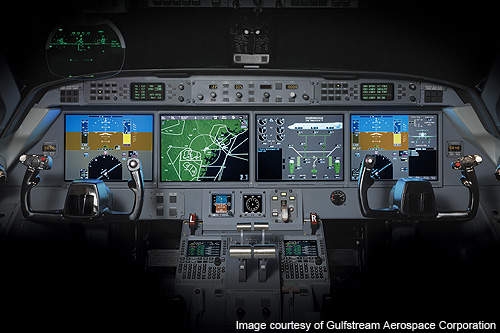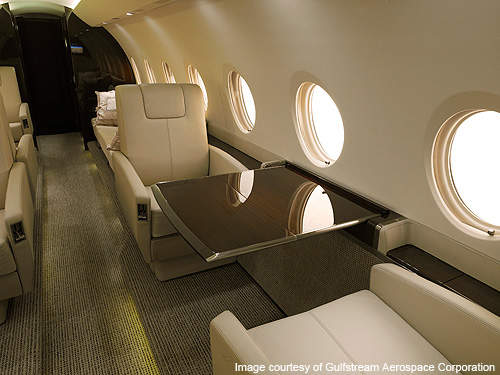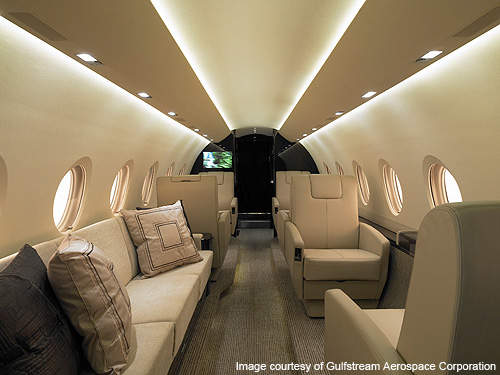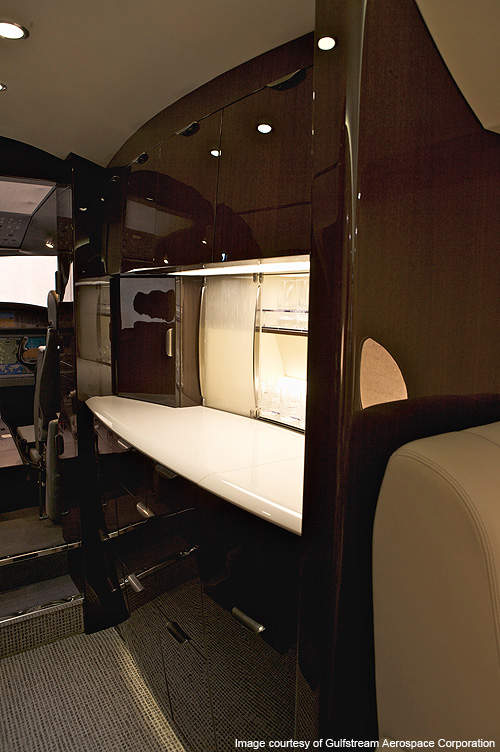
Gulfstream G280 (earlier called the G250) is a super mid-size business jet designed and manufactured jointly by US-based Gulfstream Aerospace and Israel Aerospace Industries (IAI). It was renamed as the G280 in July 2011.
It is the first aircraft to be fitted with an auto-braking system which enhances passenger safety and comfort during take-off and landing. Each G280 jet costs around $24m.
The G280 is a modified version of the G200, built by upgrading the latter aircraft with an advanced glass cockpit, new engines, larger wings, heating leading edges, longer cabin length, a new T-tail and four additional windows.
IAI built the fuselage, empennage and landing gear at the Ben Gurion Airport in Lod, Israel. Spirit AeroSystems was involved in the wing manufacturing. The final assembly of the G280 is being carried out by Gulfstream at its interiors and paints plant in Dallas, Texas.
The aircraft was transported to the Gulfstream Dallas-based Mid-Cabin Completions Centre of Excellence in August 2011 for final assembly and painting. It received provisional type certificate (PTC) from Civil Aviation Authority of Israel (CAAI) in December 2011.
In March 2012, the US Federal Aviation Administration (FAA) gave PTC to G280. The aircraft also received airworthiness certificates from both FAA and CAAI in September 2012.
Initial deliveries of the aircraft began in November 2012 with the first aircraft delivered to a customer based in the US.
Development of the super mid-size business jet
Gulfstream unveiled the development programme for the G250 in October 2008. The fuselage construction was completed in March 2009. The jet was rolled out in October 2009. The G250 took its maiden flight in December 2009 at Tel Aviv in Israel.
Its first transatlantic flight took place in October 2010 on the way to the 63rd Annual National Business Aviation Association Meeting and Convention in Atlanta.
The limit load testing of the G250 was accomplished in October 2010. The tests were conducted on the primary structural components which included the fuselage, wing, vertical and horizontal stabilisers, the main landing gear, the nose landing gear and all control surfaces.
The natural icing tests of the G250 were carried out in March 2011. The aircraft also completed various tests necessary for certification by the US FAA, Civil Aviation Authority of Israel and the EASA.
Gulfstream received a G280 jet order from Asia Jet in October 2010.
Features of the US-Israel jointly built aircraft
The G280 features a lighted display compartment, spoilers, a rudder, ailerons, elevators, a microwave oven, wingtip taxi lights, tail logo lights and a large waste compartment. It is also equipped with LED reading and table lights, a precise flight pulse-lite system and a pressurised water system.
An emergency locater transmitter (ELT), a passenger address system (PAS), an on-board oxygen generating system (OBOGS) and an iridium communication system are also installed in the aircraft.
Flight deck of Gulfstream G280
The Gulfstream G280 is fitted with a glass cockpit that can accommodate a pilot and a co-pilot. The flight deck is equipped with a Collins head up display (HUD II), enhanced vision systems (EVS II) and synthetic vision (SV-PFD).
Both EVS II and HUD II allow the pilot to view the infra-red image of surroundings even in poor visibility conditions. The SV-PDF displays infra-red imagery of adjoining terrain, the runway environment and obstacles on the primary flight display during zero visibility conditions.
G280 cabin features and onboard space
The G280 features a spacious and comfortable cabin with plenty of leg space for passengers on-board.
The cabin can accommodate ten passengers in two seating areas. It has been designed to provide passengers with in-flight access to the 120 cubic feet baggage compartment. The cabin has 19 panoramic windows.
The cabin has a large galley and a vacuum toilet system. Cabin management systems control cabin systems through the use of touch screens, capacitive touch switches and a passenger control unit (PCU). The floor area of the aircraft is 17-35% larger than that of conventional jets.
The length and width of the cabin are 7.87m and 2.18m respectively. The height is 1.9m.
The total interior length of the cabin is 9.83m. Its cabin and baggage volume are 26.5 cubic metres and 4.36 cubic metres.
Avionics of the Gulfstream G280
Related project
Gulfstream G150 Mid-Size Business Jet, US
Gulfstream Aerospace Corporation, based in Savannah, Georgia, announced the wide-cabin, high-speed G150 business jet in 2002.
The G280 is equipped with a Rockwell Collins Pro Line Fusion avionics suite which includes cursor control devices, moving map displays, a standby multifunction controller (SMC), a flight management system, automatic descent mode, dual auto-throttle system, Jeppesen charts and universal graphical weather station.
The cursor control device decreases the workload of the pilot. The situational awareness and safety of the pilot are improved using modern graphics, moving map displays and synoptic pages. The SMC includes the standby instruments and a display controller.
The G280 is powered by two Honeywell HTF7250G turbofan engines. Each engine can produce a maximum thrust of 33kN. The inclusion of low emissions SABRE combustor technology reduces NOx, CO and HC emissions.
The aircraft is fitted with engine nacelles, fire suppression systems and thrust reverser. It is also equipped with one auxiliary power unit (APU) which can generate pneumatic and electric power on the ground or in flight.
Performance of the business jet
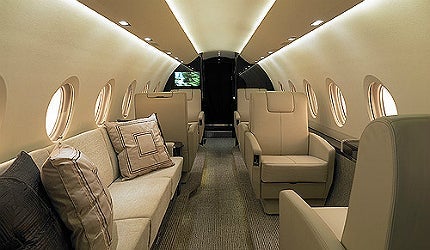
The G280 features a spacious and comfortable cabin with plenty of leg space for passengers
The G280 can fly with a maximum speed of 900km/h. Its cruise speed is 850km/h. The range and service ceiling of the aircraft are 6,297km and 13,716m respectively. The take-off distance is 1,512m. The jet weighs around 10,954kg and its maximum take-off weight is 17,963kg.



